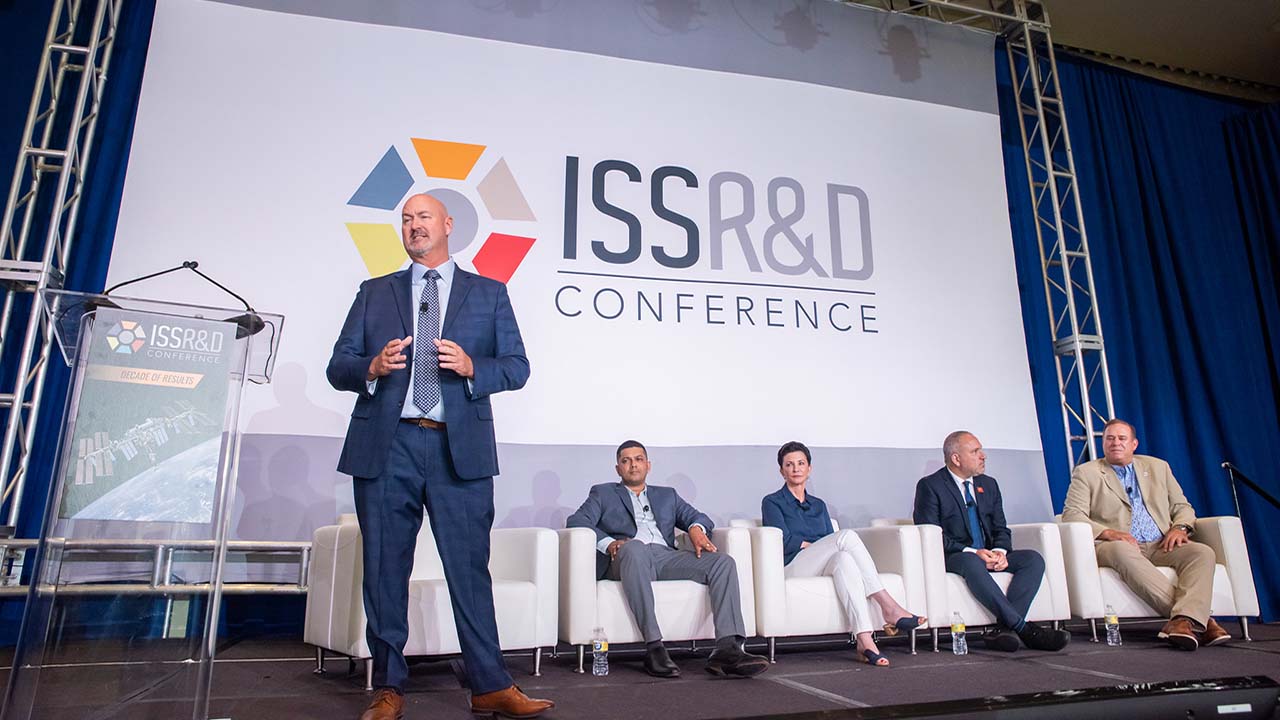This piece is part of our ISS360 reflections series highlighting the 2022 International Space Station Research and Development Conference.
The unique conditions on the International Space Station (ISS) allow companies to create products in space that cannot be realized on Earth or that could be superior to their terrestrial counterparts. In a panel session at the 2022 ISS Research and Development Conference (ISSRDC), industry leaders discussed how the orbiting laboratory can provide valuable benefits for in-space production applications such as tissue engineering, advanced materials production and characterization, and therapeutic development.
The past 10 years of the ISS were the decade of utilization, where NASA, its partner agencies, and the ISS National Laboratory were learning how best to use this powerful platform in low Earth orbit. Now, in this next decade, we’re seeing the benefits of all the experiments that have been carried out onboard.
“We are living in an exciting era on the ISS,” said Ken Shields, director of business development at Sierra Space, during the panel session. “As we begin to transition from government control to commercial, we are starting to see new capabilities that we’ve never seen before.”
Shields says that we’re on the cusp of something incredibly exciting: the next great industrial revolution, only this time it’s in space. Through the ISS, companies and research institutions will be able to make advancements in technology, robotics, and even artificial intelligence. In the not-too-distant future, we will see a transition from one space station to multiple, commercially run space stations that will act as mini space factories, manufacturing new products ranging from medicine to new materials and maybe one day organs for transplant.
“This is truly an exciting time in space,” said John Vellinger, executive vice president of in-space manufacturing & operations at Redwire, during the panel session. “We’ve worked really hard to get to the point where we’re working to turn our research into products.”
According to Vellinger, Redwire was able to leverage the ISS to create an industrial protein crystal for use in optics and other industries that is superior to the crystals grown on the ground. This is one of the first examples of how the space station can be used to create products for Earth-based industry.
During the panel, Paula Grisanti, CEO of the National Stem Cell Foundation, discussed the value of doing research in space to better understand degenerative brain disorders. Using organoids derived from the donated stem cells of patients with Parkinson’s disease, Grisanti and others hope to be able to understand what is happening to the brain.
“In space you can actually see the cells talking to each other and interacting in ways that are not possible on Earth,” Grisanti said during the panel. “We are hoping to be able to identify the point at which that conversation goes south, and you could intervene with a new drug or cell therapy that would halt the progression of these types of degenerative diseases.”
A recording of the full panel session is now available. ISSRDC is an annual conference hosted by the Center for the Advancement of Science in Space, Inc. (CASIS), manager of the ISS National Laboratory; NASA; and the American Astronautical Society (AAS). For more information on research sponsored by the ISS National Lab, visit our website.







